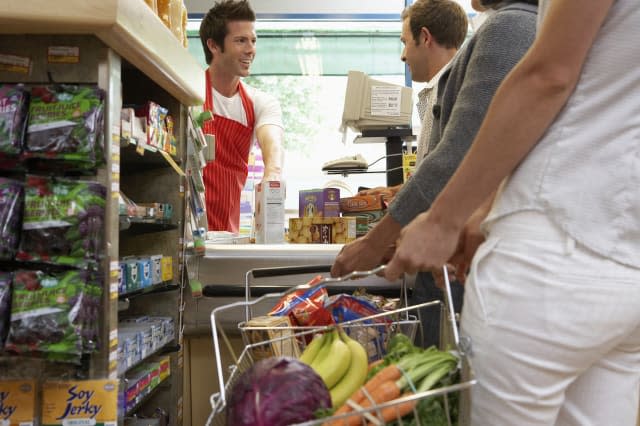Why your supermarket checkout queue always moves slowest

The real reason why our supermarket checkout queue always seems to be the slowest has been revealed by a new book - and the answer is surprisingly easy. When our queue moves fast, we think about getting our shopping out of the trolley, and finding our bags: it's only when it moves slowly that we have time to look around and compare it to the other tills. We don't think about all the times we haven't bothered to look around us - so we assume that it happens every time.
%VIRTUAL-ArticleSidebar-shopping-guide%
David Andrews adds in "Why Does the Other Line Always Move Faster?" that the odds are also stacked against us. If you're in a queue, you compare your line to the ones either side. There's therefore a two in three chance that one of the other two queues will be faster than you - but only a one in three chance that yours will be fastest.
The book is out in December, and the findings were revealed by the Sunday Times. It also revealed that the British are actually not a nation that has always stood quietly and sensibly in line. Apparently the notion of us as a nation of good queuers was developed as the result of World War II propaganda - designed to make us wait more patiently in line for food.
Andrews is not the first to have come up with a theory behind why our queue moves slower. In the US Envirosell, a retail consultancy, carried out a study that found people over-estimate how long they have been waiting. If they have waited up to three minutes, they tend to have a very clear idea of how long that wait was. However, if they wait any longer, the period of time is multiplied in their mind. Someone who waits four minutes will report that they waited five or six minutes, while someone waiting five minutes will say they waited ten.
Meanwhile, a study by Ziv Carmon from INSEAD found that people will focus on what happened towards the end of their wait - forgetting that their queue may have been quicker at the start.
How to pick a better queue
There are a number of theories that claim to help you pick faster queues. Most people will do some sort of quick calculation based on how many people are in the queue and how much they have in their trolley. Dan Meyer, a maths teacher from California, has studied this in detail and suggests you put more weight on the number of people in the queue - because each item takes 2.8 seconds to scan, while the process of paying and leaving with bags takes 48 seconds. You'd therefore rather have 17 more items than one more person.
You could also do with spotting what they have in their trolley - as anyone with a lot of fruit and veg is going to need to have it all weighed - which will take time.
Shoppers agree that the type of people in front of you makes a difference. There is little robust academic research on the subject, but it stands to reason that people who are distracted (including people with children), those clasping a number of coupons, and those who don't seem to move very quickly, are going to take longer to bag their items and pay up, which you need to factor into the equation.
And you should ideally have a glance at the checkout assistant too, for someone who seems engaged, competent, and not too chatty.
If all that seems like too much bother, author Raphael Rosen recommends leaning towards queues on the left, because 90% of the population is right-handed, and therefore tends to head to the right.





